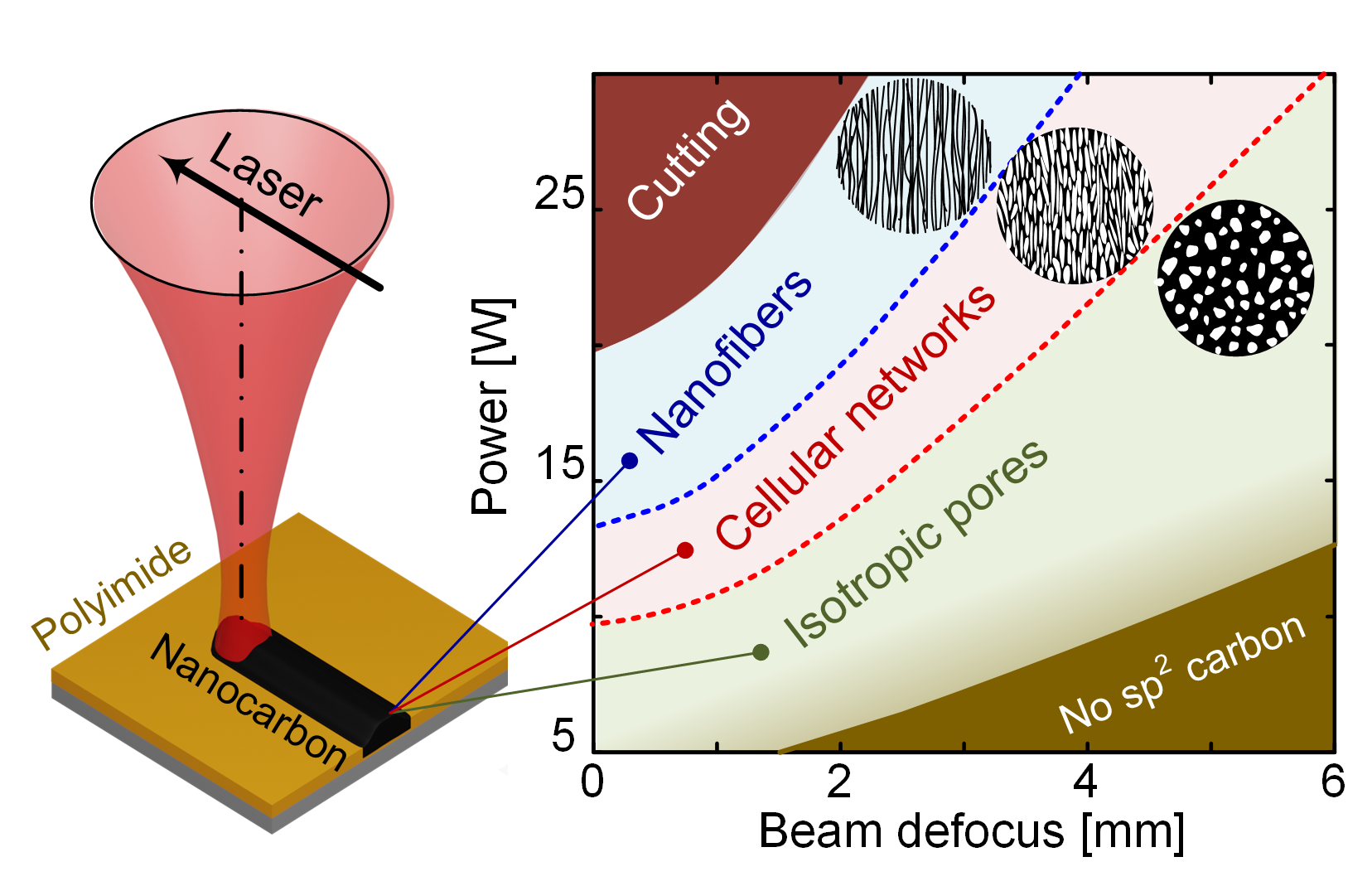
Year
2021Abstract
Laser carbonization of polymers is an emerging technique that enables directly patterning conductive carbon electrodes for a plethora of flexible devices, including supercapacitors and sensors. While these laser-induced nanocarbon (LINC) patterns were previously shown to have various hierarchical porous and fibrous graphene-based morphologies, the fundamental mechanisms underlying the formation of specific LINC morphologies is still largely missing. Here, we present a method for lasing polyimide films with spatially controlled gradients of optical energy flux. Combined with Gaussian beam modeling, our approach uniquely enables continuously sweeping different laser fluence values as a spatial map along the laser path. We find that above the fluence value of 5 J/cm2, progressive carbonization and swelling results in porous LINC. We also identify two additional thresholds that correspond to morphological transitions: first, from isotropic porous morphology to anisotropic networks at 12 J/cm2; second, from anisotropic networks to aligned nanofibers at 17 J/cm2. Our results show that anisotropic cellular networks are the most electrically conducting and have the highest quality sp2 carbon. However, the aligned woolly nanofiber morphology is electrically insulating along the length of the lased lines, although they exhibit the highest degree of carbonization with the least heteroatom content. Hence, our results provide insights into the fluence-dependence of the physicochemical processes underlying LINC formation. Moreover, our approach enables generating a morphology diagram for LINC, which facilitates precise tunability of both the morphology and properties of LINC patterns, based on easy-to-control processing parameters, such as laser power and degree of beam defocusing.








